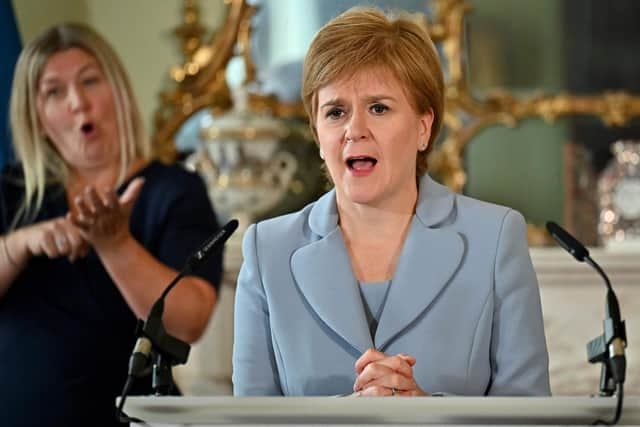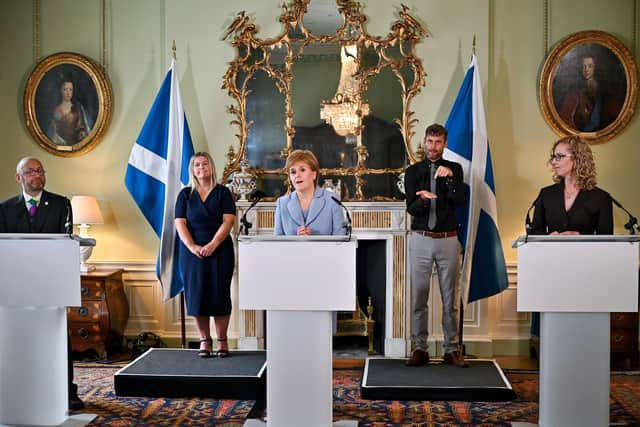Analysis: Who wins in the power-sharing deal between the SNP and Greens?
“Just about” because the whole thing has to be approved by Scottish Green members before the party gets its two ministerial positions and a say in government policy.
And who knows whether they will, as one Green source said “not only approve it, but be genuinely delighted” by it, or if they will point-blank refuse to deal with a “transphobic party” as a litany of members suggested in a letter to their leaders a few weeks ago.
Advertisement
Hide AdAdvertisement
Hide AdOf course, the SNP members can only look on at such internal democracy with envy.


The deal will go to their party’s NEC for approval – which given Nicola Sturgeon’s influence there will ensure it is supported – with some kind of consultation with the rank and file coming afterwards.
The announcement of the deal, with three party leaders – the Greens have two – looked almost presidential rather than governmental. But who really benefits from this agreement?
Certainly, for Ms Sturgeon it will give her the kind of stability she was so obviously missing in the last parliamentary term, when opposition parties looked like they might be able to push through a vote of no confidence in the First Minister after the Alex Salmond harassment inquiry came to a close. It was the Greens who ultimately ensured that didn’t happen.


And while policy exclusions have been negotiated by the Greens on nine issues from the regulation of prostitution to Nato membership, when it comes to budgets, no-confidence votes and a range of subjects like housing, climate and transport, the government can now rely on an extra six votes, upping its numbers to a comfortable 71 MSPs.
It also means in the run-up to the COP26 climate summit in Glasgow, the government has never looked more environmentally-friendly.
On the other side, the deal is historic for the Greens who have never been in government in Scotland – or the UK – before.
But with responsibility comes accountability. They will face a scrutiny never before experienced given their previously level of importance, in terms of numbers, in the Parliament.
Advertisement
Hide AdAdvertisement
Hide AdGovernment means the opportunity to put ideas into action, and if they are not seen to be doing so, then they could face a backlash from members and supporters.
Simultaneously they will be confronted more openly with the suspicion in which they are held by many in the business community, convinced they will attempt to stymie the economic growth much needed after the Covid pandemic.
Both parties were at pains to say this was not a coalition of the kind which sunk Nick Clegg and the Liberal Democrats, but the reality is the public is unlikely to view it that way.
And while it might feel as though both parties have until the next Holyrood elections for people to decide what they make of this new arrangement, next year’s council elections could see any disquiet play out on the polling stations.
The Greens have tied their colours to the SNP mast and will now sail or sink with it as a result.
A message from the Editor:Thank you for reading this article. We're more reliant on your support than ever as the shift in consumer habits brought about by Coronavirus impacts our advertisers.
If you haven't already, please consider supporting our trusted, fact-checked journalism by taking out a digital subscription.
Comments
Want to join the conversation? Please or to comment on this article.
